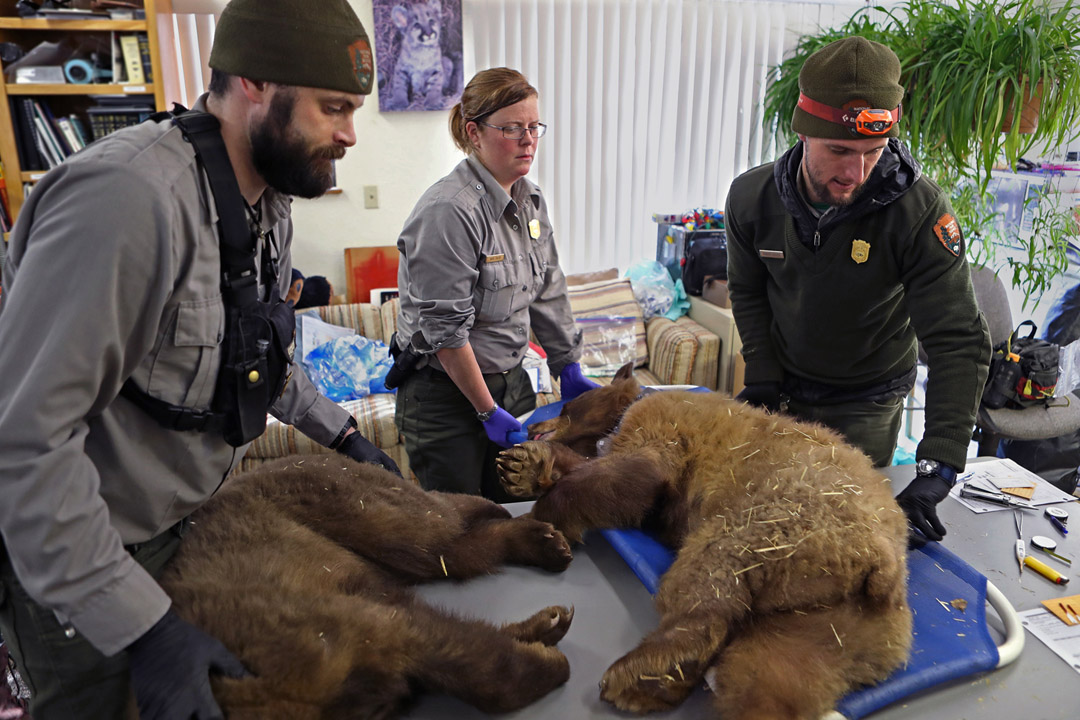
NPS Wildlife biologists fitting yearlings with GPS collars at LTWC (Photo by Drew Wharton)
In January 2017, the sibling yearlings—orphaned after their mother was hit and killed by a car on Independence Day, 2016—had been in hibernation for more than a month already. The cubs, once weighing eight pounds each, now weighed between 63 and 95 pounds, after being well nourished through their first year by the Lake Tahoe Wildlife Care Center (LTWC). They were healthy, fat, and ready to be transferred back to the park to a pre-selected den site that biologists prepared in Yosemite’s wilderness for this purpose.
In preparation for their return to Yosemite, park biologists went to LTWC to assess the yearlings’ body condition and health, and to fit them with GPS collars, which were funded by donations to Yosemite Conservancy. The collars would allow park staff to monitor how long the bears stayed in the den and to watch the movements of the cubs once they left the den in search of food. The collars were programmed to automatically drop off after six months, before the cubs outgrew them, and the information collected by these GPS collars would allow biologists to better understand the bears’ behaviors and how successful they were as wild, independent bears.

GPS collars with automatic drop-off and capture forms (Photo by Drew Wharton)
As the park biologists made the long drive back to Yosemite with bears in tow, a group of thirty park employees and volunteers made preparations to ski the bears on sleds to the den site. This included retrofitting rescue sleds with bear traps, harnesses for people to pull and push the bear traps, and preparing hot water bottles and lining the traps with hay to keep the sedated bears warm on their trip. With everything assembled, three teams began transporting the precious cargo up the mountain while one biologist skied alongside each sled to monitor the bear’s condition during the journey.
It took several hours and a lot of work, but all three bears arrived at the designated site. In the winter of 2016 to 2017, California broke its five-year drought with impressive amounts of snowfall. This allowed for great skiing and promising conditions for the yearlings to remain in the den. It also meant that the den site, which was located at the base of a tree, was now under six to 10 feet of snow. Staff excavated a hole to get down to the opening. Each bear was carefully lowered into the den with hopes they would remain there, sleeping the rest of the winter.
The yearlings had made it back to Yosemite, and back into the wild after seven months. The bears had been given the best chance possible, and now their fate was their own once again. They were returning to what we hoped would be a wild and free existence. Everyone present took a moment to appreciate the magnitude of effort it took to get these bears through their first year, and to say goodbye to these bears that we would hopefully never see again as they lived their lives, far from people as wild bears.
To be continued in next month’s blog post. If you missed it, read part 1.
